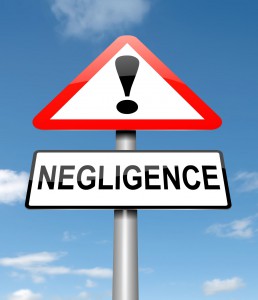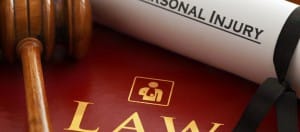Proving Negligence For A Personal Injury Lawsuit - A Required Element For Recovery
Negligence in Personal Injury Claim or Lawsuit
The injury victim normally must demonstrate that the person who caused your injury was negligent in some way. Negligence is when someone acts below the standard of care, or with careless intention. If the defendant is to be proven responsible for the injury, demonstrating negligence will be a necessary component of the claim or lawsuit. A personal injury lawyer is experienced in demonstrating and proving negligence, which is required to win a personal injury claim or lawsuit.
The Requirements For Negligence Lawsuits

Negligence
In most cases, there are four different requirements that must be met in order to file a negligence lawsuit. These requirements include:
- Establishing that the negligent individual had a responsibility to protect the person who was injured or otherwise harmed
- Establishing that the negligent individual breached that responsibility when they failed to take action that another reasonably sensible person would have taken in a similar situation
- Establishing that the conduct of the negligent individual was the reason that the harm occurred (foreseeability)
- Establishing that the victim sustained an actual injury that can be documented
All of the above requirements are upon the plaintiff to prove. A successful personal injury case must establish all four of these things by a preponderance of the evidence. Every case is different and only a lawyer can give legal advice after learning the particulars of your situation.
California Personal Injury Lawyer

Proving The Negligence
Each of the four requirements for negligence can be proven in very specific ways. Although the specific type of injury can impact the way that each aspect of negligence is demonstrated, in most cases the following things apply.
Responsibility of Care

Personal Injury Law
This is sometimes open to interpretation, so it is important to establish responsibility as clearly as possible. In cases like auto accidents where a driver ran a red light and an accident resulted, it will be fairly easy to establish that the driver failed to fulfill their responsibility towards the safety of others on the road. However, other cases are less clear. For example, if a homeowner has a fully fenced yard that contains a trampoline, are they responsible for keeping children from jumping over their fence to play on that trampoline? What if a child were to jump over the fence and break their leg on the trampoline? In such a case, the injured child's parents might try to show that the homeowner had responsibility of care, but it is considerably more challenging.
Failure to Take Action
For this part of a negligence case, it becomes important to consider how an ordinary person would have reacted to the situation that led to the injury. For example, any normal business owner would be aware that when their employees mop and wax the floor, leaving it slick and wet, that a "Caution Wet Floor" sign should be posted for visitors. If a sign is not placed where visitors can see it, the business owner will often be found negligent, since most people in that situation would have reacted by posting cautionary signage.
Res Ipsa Loquitur
Res Ipsa Loquitur is a common law legal concept used to established duty/breach (negligence). Latin for "the thing itself speaks," it allows negligence to be inferred from the circumstances even if the injury victim cannot demonstrate the specific negligent act that took place. For example, if you are rear ended in a car accident while at a red light, it is most likely that the person who rear ended you was negligent. You hardly need to show evidence of what they were doing inside their automobile. People don't generally rear end cars absent negligence. Lawyers have experience identifying this logic - so consult with one if you are hurt!
The Cause of the Injury
It is the responsibility of the plaintiff to demonstrate that the defendant's failure to take action caused them to be injured. There may be many clear cause and effect situations, especially in situations like auto accidents. For example, if a person is driving 20 miles over the speed limit and runs into another driver, the cause of the injury is clear. In other cases, it may be less obvious. This is particularly true in cases where a pre-existing injury may be involved. If the cause is not clear, a skilled auto accident attorney can find creative ways to strengthen their client's case.
The Monetary Damages

Negligence in Personal Injury Law
To be properly compensated in a negligence case, the injured person has to demonstrate monetary damages. The bulk of these damages are typically medical costs, which makes it fairly easy to arrive at a monetary figure. However, there may also be a number of non-medical costs. Time missed from work is a significant damage in many cases. A personal injury attorney can help you determine whether there are other monetary damages that can be included in your negligence case as well.
Read About the Hiring A Workers' Compensation Lawyer
to help win your insurance claim!

